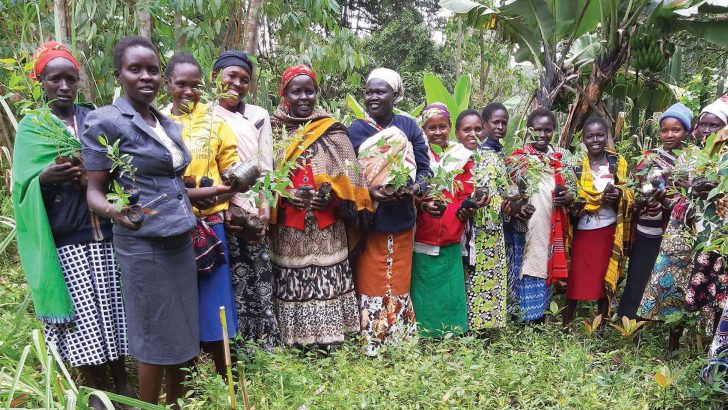The CEO of Misean Cara tells Ruadhán Jones about Covid’s unique challenges for Irish Missionaries
As Misean Cara’s new CEO says, it is not a secret that the Irish missionary is ageing and declining in numbers at home and abroad, a fact exacerbated by Covid-19. The face of the Irish, faith-based missionary organisation is changing, as new missionaries are now predominantly indigenous. However, as Misean Cara released its annual report for 2020, CEO John Moffett told The Irish Catholic that Irish missionaries are as determined as ever and still have much to offer.
To begin with, Mr Moffett lays out the massive challenges the onset of Covid presented to missionaries on the ground. Due to the age-profile of the Irish missionary, many of Misean Cara’s members were themselves badly hit.
“The Irish missionary is aging and declining in numbers overseas,” Mr Moffett begins. “So it’s been a tough year for many of our members. I mean, a lot of them have actually lost people within their congregations to Covid, the death rate has been higher than in normal years in both serving and retired missionaries. That takes a toll on members – people who have lived together, worked together, shared their lives. Losing those members takes a massive toll. That has to be appreciated.”
The challenges weren’t exclusively within the congregations, as you would expect, and the missionaries’ had to adapt quickly to the emerging needs, Mr Moffett explains.
“Health projects, the shortage of supplies in PPE, delivering adequate health services – those are some of the major challenges for our missionaries on the ground,” he says. “The lockdowns had a huge impact on the communities that they work with. If you can imagine, the majority of communities that missionaries work with are the poorest and most vulnerable people.”
Economy
“These people make their money through the informal economy. If they are not able to work for a day, they’re not able to buy food for a day. If they’re not able to work for a week or a month that has a massive impact on the household and being able to support a household adequately… So food distributions have been really helpful and that’s something that they’ve all been able to pick up on and respond to really quickly.”
Flexibility was the key and, while there was a great deal of uncertainty, Mr Moffett has only praise for the manner in which the missionaries responded.
“As you can only expect from Irish missionaries, dealing with shocks and change is second nature to them. There was a determination and flexibility that they brought to their work that was appreciated by the communities they work with and ourselves in Misean Cara. It was terrific,” he finishes.
In 2020, the member congregations of Misean Cara implemented 384 projects “aimed at bringing positive and lasting change to the lives of 1.87 million people around the world”, the 2020 report says. “Their work in 2020 was carried out in 51 countries with Misean Cara funding totalling €13.7 million.”
As debates regarding the role of the Church in Ireland continue to rumble on, and despite declining numbers of Irish missionaries, Mr Moffett believes missionaries are still integral to the communities in which they work.
“Absolutely,” Mr Moffett begins. “I don’t want to get into Church-state relations, around where they should be separate, but the long and the short of it is that a lot of the countries where our missionaries work at present, education systems, health systems – which are increasingly integrated into state systems – but they wouldn’t function and they wouldn’t be there without the presence of missionaries. There very much still is a need for and a demand for the services that missionaries provide.”
Framework
To that end, Misean Cara have continued to develop a conceptual framework for the missionary development approach, which they are now sharing with other international agencies.
“The Missionary Approach to Development and Intervention (MADI) – it’s not rocket science, it’s trying to pool together how missionaries have worked and continue to work, what sets the missionary approach to development apart from and unique to other kinds of ways of doing development,” Mr Moffett explains. “One of the ways we’ve taken this forward, in the previous year, is use that framework and model to look at how missionaries particularly are well placed to reach the furthest behind.
“Most development actors or programmes, their programmes are not set up in a way that would actually reach the real poorest or meek in a society. They tend to build on people with agencies or assets. Generally those who are at the bottom of the pile neither have agency nor assets.
“Those are the people the missionaries generally work with and to bring on… It takes time to reach any kind of level of transformation but it’s important that we continue with those people. In terms of how missionaries operate, the language we would use is ‘the last, the lost and the least’.
“It was very much drawn from missionaries own experience and pulled together into a conceptual framework. We’ve been able to take that a little bit forward, so not only sharing it with our Irish members, but with trusts and foundations who support Catholic missionaries in the US. We’ve recently shared that learning and approach in a workshop with them to take it out further, out of the Irish missionary experience and into a global approach,” Mr Moffett says.
When asked about the challenges facing Misean Cara and its members for the coming year, the long shadow of Covid unsurprisngly looms large. Its effects on the workings of the organisation, its members and the people they help is going nowhere fast.
“The big challenge of Covid continues to loom,” Mr Moffett says. “In terms of where our members work, while we’re moving ahead with vaccine rollout in Ireland, Europe and the developed world, access to vaccines is really, really slow in the developing world. Our members are facing fourth or fifth waves of infection in places they operate. Places like Uganda at the moment have gone back into a really strict complete lockdown, which is having a massive impact on people and communities there.”
Questions
Beyond that, there are broader questions on the horizon for Misean Cara, as the demographics of religious orders continue to change. The number of Irish missionaries currently on mission is 634, according to the Association of Leaders of Missionaries and Religious of Ireland, and the missionary organisations members are increasingly local and indigenous.
“Some of the big issues for us at the moment are about the changes our members are undergoing as the Irish missionary ages and declines in numbers overseas,” Mr Moffett says. “It’s handing over the charism and purpose of their mission work to local and indigenous missionaries. We’re starting to see a really vibrant, younger indigenous missionary taking on the role.
“Our members are working through what that means about passing on the mantle if you like. That’s something Misean Cara is very supportive of, but we have to start thinking through how Misean Cara responds to that to be able to continue to support the members in this new way of working in the future, and how we transition along with that as well.”


 Ruadhán Jones
Ruadhán Jones Dinah Chenangat (second from left) with a group
of women she has supported through her work with the Chepnyal Development Project, an initiative of the Daughters of Charity in Kenya.
Dinah Chenangat (second from left) with a group
of women she has supported through her work with the Chepnyal Development Project, an initiative of the Daughters of Charity in Kenya.